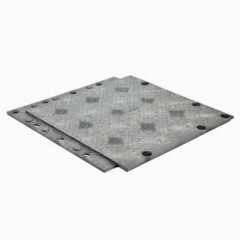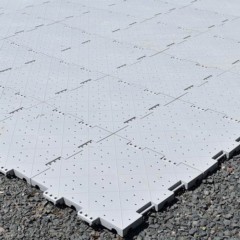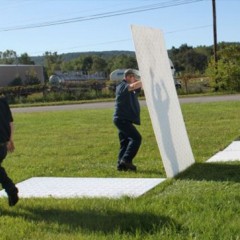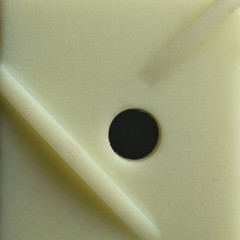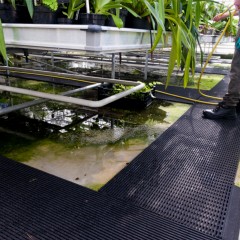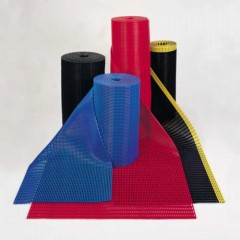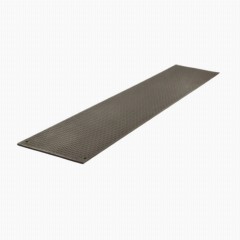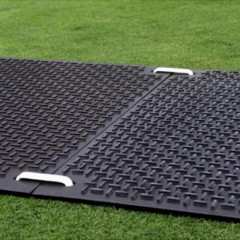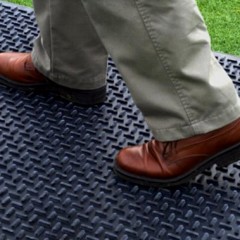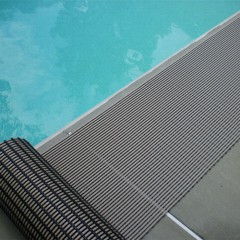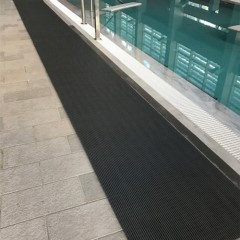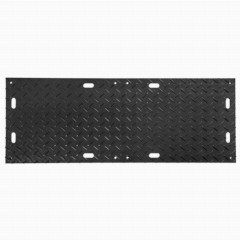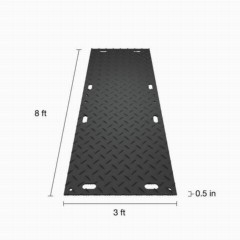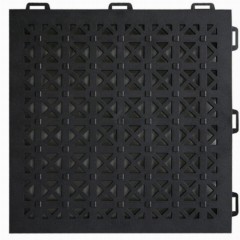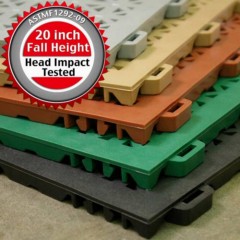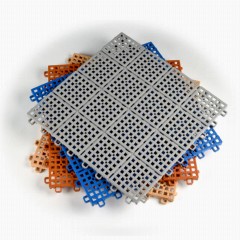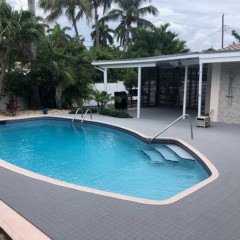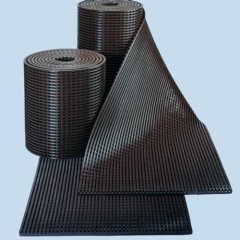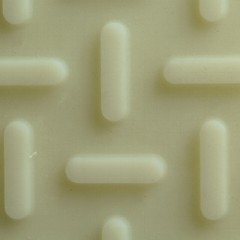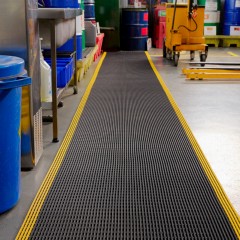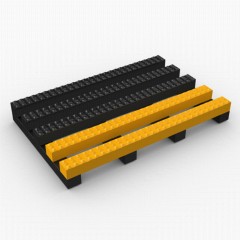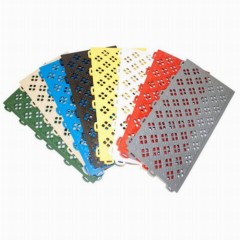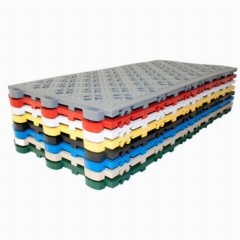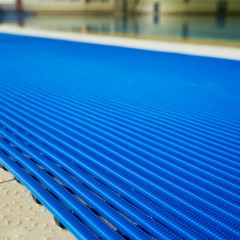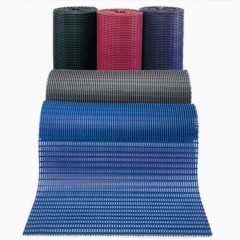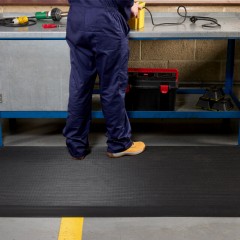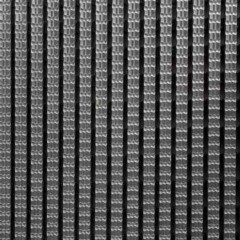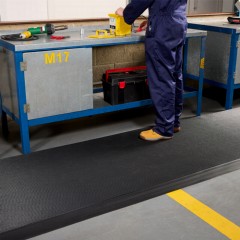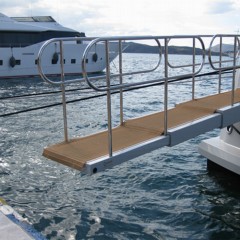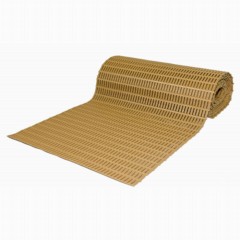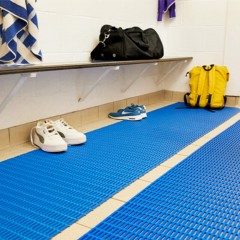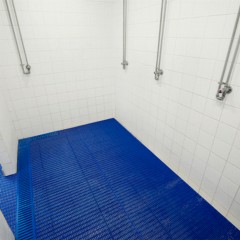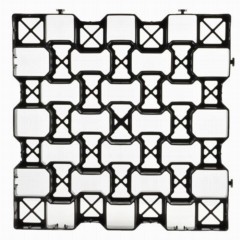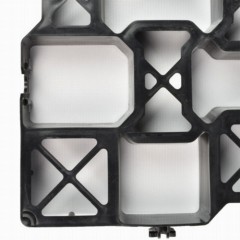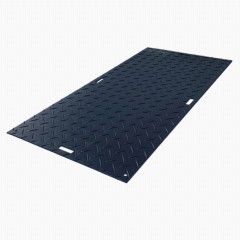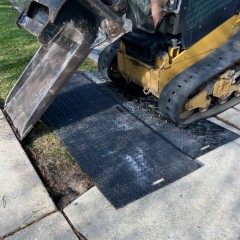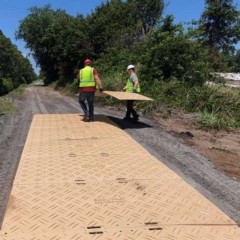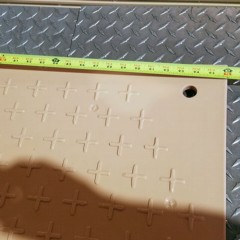Options for Outdoor Walkway Mats
Outdoor gatherings are a great way to get back to nature. For some people, the more remote a location is for the party, the better. However, reaching those remote locations can be quite a chore, especially if it rains and you are trudging across a muddy trail. You certainly don’t want soft ground to prevent people using a wheelchair, walker, or baby stroller from reaching the party. Outdoor walkway mats from Greatmats create a temporary sidewalk that’s as sturdy as the real thing.
Our heavy-duty walkway mats for outdoors deliver temporary access to a remote area, whether you’re going over mud, grass, or gravel. The mats can also be placed over sand to provide beach access or create a walkway within a layout of beach volleyball courts. These sturdy, portable mats even work to reach an exterior roof patio.
Types of Outdoor Walkway Matting
We offer four primary formats and materials in our outdoor walkway pads.
- Large Plastic Mats: Polyethylene plastic is a common material in use for our outdoor mud mats. It’s lightweight and durable, making it ideal for this use case, as you can DIY the construction before the party and tear it down quickly afterward. The layout goes fast because of the large size of the mats, often measuring 4x8 feet each. This plastic doesn’t soak up moisture.
- Tiles: Interlocking tiles made to go over uneven ground can consist of polypropylene or PVC plastic. PVC is a little more flexible than polypropylene, which simplifies the installation but reduces the firmness in the temporary sidewalk. These tiles are smaller than the 4x8 plastic mats, making them easier to handle. You won’t cover the ground as quickly, though. These plastics don’t soak up moisture, either.
- Rolls of Outside Matting: When you want to use a roll of outside matting, we offer PVC plastic rolls that are significantly lighter than an outdoor rubber walkway roll. The PVC rolls have perforations that allow excess water to flow away, making them ideal for use around a pool.
- Rubber Mats and Tiles: When you want to provide maximum traction in your outdoor walkways, rubber tiles and mats work nicely, especially for roof walkways. However, they’re heavy, so creating a long walkway can be more challenging with rubber than with plastic.
Benefits of Walkway Mats
Our temporary walkway mats offer a number of benefits, including:
- Raised pattern texture for traction
- Anti-slip materials
- Perforations to drain standing water
- Waterproof or water-resistant
- Won’t sink in mud or soft ground
- Supports weight of wheelchairs or people walking
- Long-lasting materials that aren’t brittle
- Ease of installation
- Multiple color options
- Perfect for temporary use
- Install over uneven ground
- Rinse with a garden hose to clean
Where to Use Outside Matting for Walkways
Because of the materials used to construct our mats for outdoors, they will stand up to all kinds of rough conditions and weather. You can use them over almost any type of base surface, including:
- Grassy areas
- Mud
- Dirt
- Gravel
- Concrete
- Sand
- Near a pool
- Roof
Outdoor Walkway Mats Q&A
What are some temporary sidewalk ideas?
Ideas for temporary sidewalks include layouts to reach an outdoor party, a beach wedding, a backyard gathering, a construction site, and more.
What kind of flooring can I use on a beach?
The
best kinds of flooring to use on a beach to provide easy walking or wheelchair access include firm plastic and vinyl tiles and mats that interlock for a secure layout.
What are the best handicap beach access mats?
The
best handicap beach access mats include firm plastic outdoor tiles and mats that interlock for the installation. These mats allow you to create an ADA-accessible walkway that’s safe for people using wheelchairs or other mobility equipment.
What are the best mats for wheelchair paths on grass?
The
best mats for wheelchair paths on grass include those consisting of firm plastic pieces that interlock securely and that won’t buckle at the seams under the weight of a wheelchair. These mats are only made for temporary use, as they’ll kill the grass when left in place for several days.
What’s the best outdoor rubber flooring for walkways?
The
best outdoor rubber flooring for walkways includes rubber playground, deck, and patio mats. These materials stand up to any kind of weather, yet they deliver a sturdy surface for people who are walking. The edges won’t buckle under stress and create a trip hazard.
 $500 /Tile You Save 25%$5.00/sqftShips Out in 1-3 Working DaysShop$91098 /Roll You Save 14%$13.80/sqftShop$398 /Tile You Save 38%$4.33/sqftShips Out in 1-3 Working Days Free ShippingShop$1,28627 /Roll You Save 15%$19.49/sqftShop
$500 /Tile You Save 25%$5.00/sqftShips Out in 1-3 Working DaysShop$91098 /Roll You Save 14%$13.80/sqftShop$398 /Tile You Save 38%$4.33/sqftShips Out in 1-3 Working Days Free ShippingShop$1,28627 /Roll You Save 15%$19.49/sqftShop
